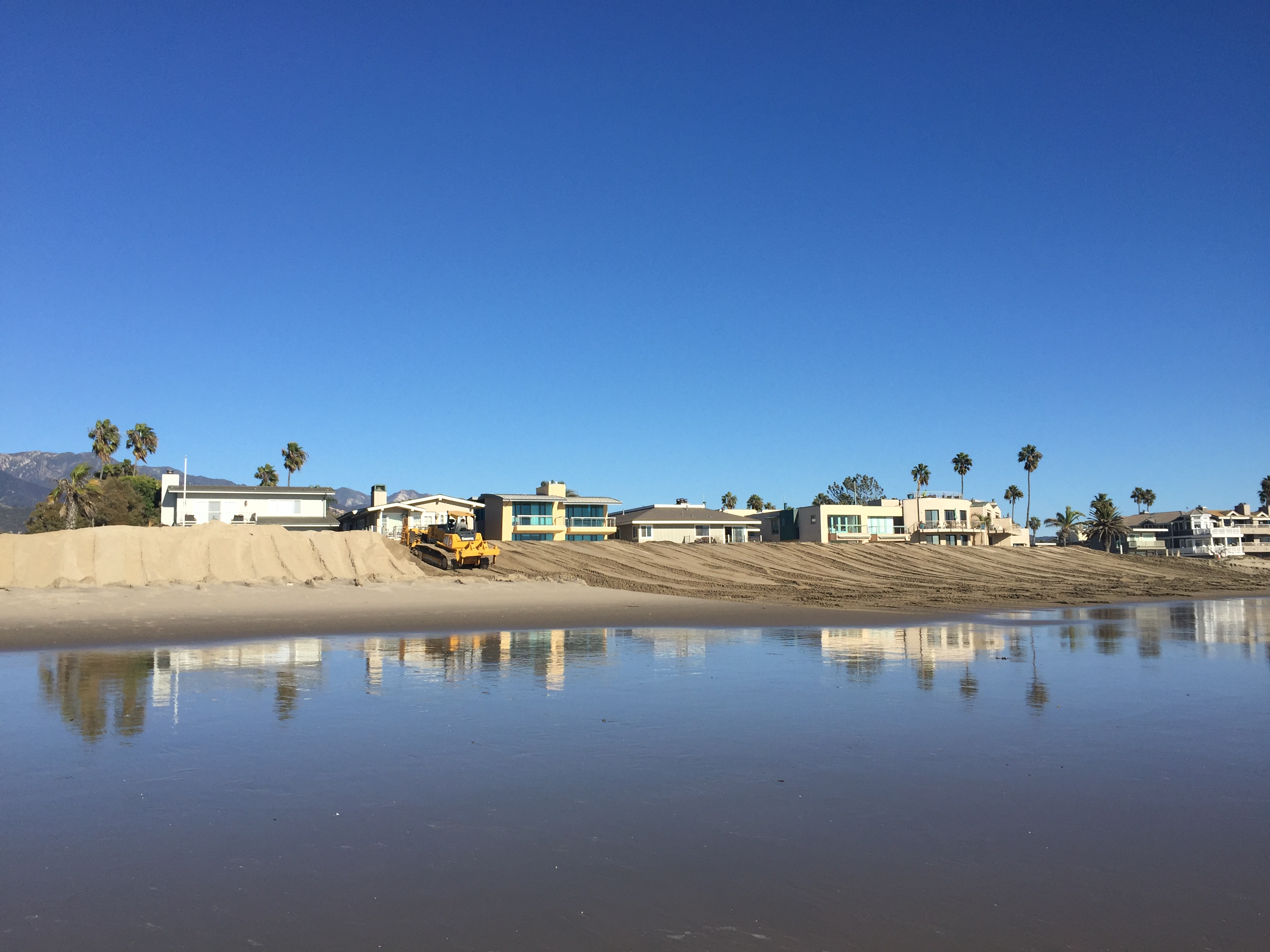City of Carpinteria General Plan/Local Coastal Plan Update
SB1 Adaptation Planning Grant: Final Case Study
Summary
This project supplements and expands on the update of the City of Carpinteria’s Coastal Land Use Plan/General Plan (CLUP/GP) that started in February 2017 and was partially funded by a Local Coastal Program Local Assistance Grant award from the California Coastal Commission (CCC). This project involves integrating transportation adaptation planning and considerations for environmental justice populations into the City’s Final Sea Level Rise Vulnerability Assessment and Adaptation Project (SLRVAAP). Following this project, the City developed CLUP/GP policies informed by the Sea Level Rise Transportation Infrastructure & Policy Adaptation Plan and expanded analysis in SLRVAAP. The City created a new Coastal Resiliency Element consistent with Senate Bill 379, Senate Bill 1000, Executive Order S-13-08, Executive Order B-30-15, Goal 2 Policy 3 of the 2040 California Transportation Plan, and the 2017 Regional Transportation Plan Guidelines. Alternative transportation policies, transportation adaptation strategies, and environmental justice issues have also been incorporated in the City’s draft CLUP/GP elements, including the new Healthy Community Element, amended Circulation Element, and amended Safety Element. The project allowed for the finalization of the SLRVAAP in 2020 and expanded analysis within the CLUP/GP.
Lead Agency and Partnerships
Lead agency:
- City of Carpinteria.
Role: public outreach, environmental reporting, technical studies, policy development, and SLRVAAP and GP/LCP updates
Partnerships:
- Caltrans
Role: SLRVAAP and GP/LCP review - California Coastal Commission (CCC)
Role: SLRVAAP and GP/LCP review
Collaboration with lead agencies and partnerships throughout the project ensured the alignment of goals and facilitated effective feedback on the SLRVAAP and GP/LCP.
Drivers
The project was driven by the requirements of Senate Bill 379 and Senate Bill 1000. The Caltrans Adaptation Planning Grant Program provided an opportunity to fund the project and ensure the requirements of Senate Bill 379 and Senate Bill 1000 are met. SB 379 requires that climate change adaptation and resilience must be addressed in the Safety element of all general plans in California. SB 1000 requires both cities and counties that have disadvantaged communities to incorporate environmental justice (EJ) policies into their general plans, either in a separate EJ element or by integrating related goals, policies, and objectives throughout the other elements.
Engagement Process
The areas containing the highest number of households below the Federal poverty line within Carpinteria and a number of affordable housing projects would be at the most risk of potential sea level rise impacts in the City. These impacts include inundation, soil erosion, and damage to residences and transportation infrastructure.
Stakeholders included Caltrans, CCC, Santa Barbara County, California State Parks, individuals from underserved and minority communities, community/neighborhood groups, local transportation advocacy groups, associations, organizations, institutions, businesses, residents, visitors from inland communities, and local research institutions and projects including the University of California Santa Barbara. Two public workshops to discuss topics of general concern were held with materials translated in English and Spanish. Monthly stakeholder meetings were held to discuss the project status and to gather public input. Stakeholders provided input on adaptation priorities, implementation timelines, and feedback on proposed policies. This feedback was incorporated into the SLRVAAP and CLUP/GP.
Climate Impact Area
The project allows the City to respond to climate change impacts related to sea level rise including large coastal storms, tidal inundation, and erosion that may damage transportation infrastructure, coastal resources, and assets important to disadvantaged communities. The project identifies adaptation strategies to reduce potential sea level rise impacts. Policies developed and included in the CLUP/GP will ensure the City is committed to implementing these adaptation measures.
Furthermore, new Healthy Community Element policies will promote alternative transportation systems that encourage active forms of transportation such as biking and walking to improve respiratory health and air quality, which have the co-benefit of reducing greenhouse gas emissions.
Funding Source
The City received a Caltrans Adaptation Grant of $218,093 and contributed a local match of $25,549.
Research and Data
The Nature Conservancy Coastal Resilience Tool was used to model flood projections and identify impacted transportation infrastructure. The U.S. EPA’s Environmental Justice Screening and Mapping Tool (EJSCREEN) was used to identify disadvantaged communities. Adaptation strategies were developed with guidance from Safeguarding California, and the CCC’s Sea Level Rise Policy Guidance document. Project progress was tracked through adherence to grant reporting and deliverable submittal deadlines.
Challenges
Implementing some of the identified adaptation policies will be a challenge. The City has largely been developed, limiting the range of transportation corridor realignments, without potentially costly acquisition of privately owned land. Implementation of adaptation strategies to address infrastructure needs may create additional storm water drainage issues or impact coastal habitat. The City will perform a cost-benefit analysis and use community input to determine the most feasible strategies. The City will look toward innovative measures to reduce capital improvement costs (e.g., expanded alternative transportation in place of road network improvements.
Outcomes
Primary project deliverables include the Sea Level Rise Transportation Infrastructure & Policy Adaptation Plan, Final SLRVAAP, Draft Coastal Resiliency Element, alternative transportation policies in the Healthy Community Element, transportation adaptation policies in the Circulation Element, and climate change policies in the Safety Element. After project completion the City will complete and adopt the Final CLUP/GP and pursue a feasibility study and concept design for a “Living Shoreline” restored cobble dune system, a near-term adaptation strategy identified as part of this project.
Replicability
The project identifies feasible strategies to minimize sea level rise impacts in the City. Policies developed for the City’s CLUP/GP incorporate both transportation adaptation planning and considerations for disadvantaged populations. Coastal cities and counties wishing to protect transportation infrastructure and disadvantaged populations from sea level rise impacts could utilize these policies and adaptation strategies to increase the resiliency of their community.
Additional Resources
Further Information
For further information about this project, please contact Steve Goggia, City of Carpinteria Community Development Director, at steveg@ci.carpinteria.ca.us or 805-755-4414.

